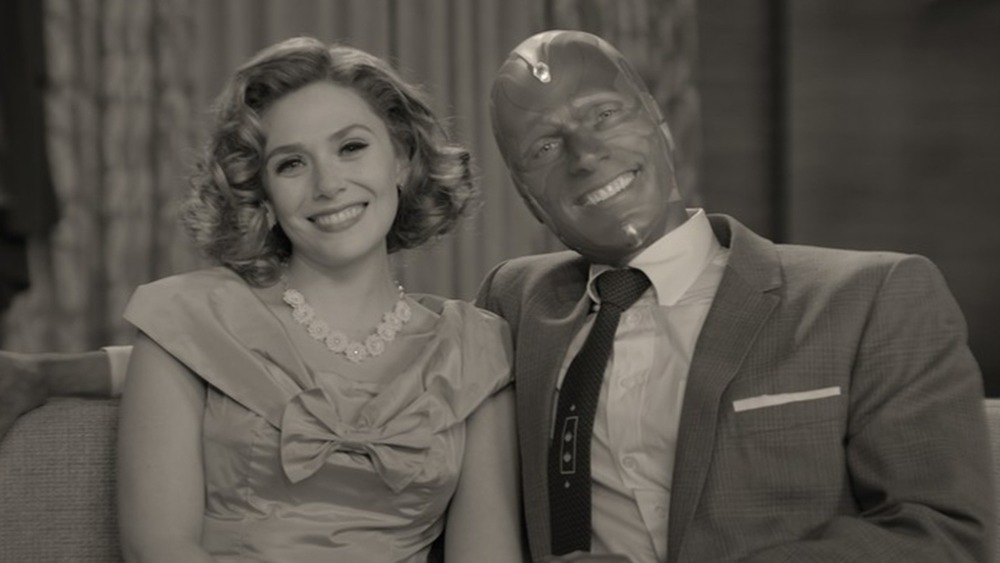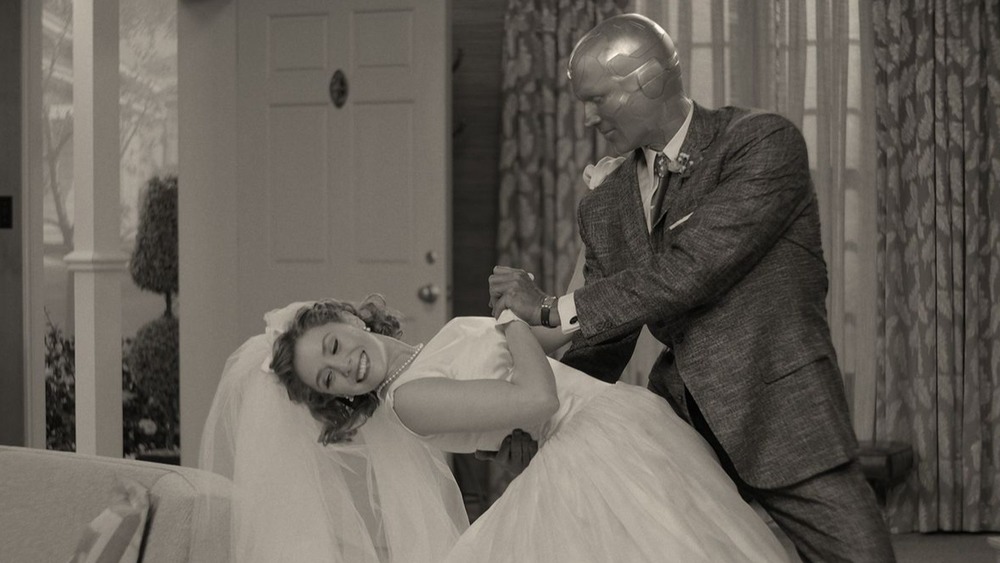What You Never Noticed About WandaVision's First Two Episodes
After an entire calendar year devoid of Marvel Cinematic Universe expansions, 2021 is wasting no time making up for the unexpected draught — courtesy of the small screen. On January 15, the Disney+ series WandaVision made its streaming debut with not one but two brand new episodes that have certainly kept fans talking. Currently sitting at a 97% fresh rating on Rotten Tomatoes, the further adventures of Wanda "Scarlet Witch" Maximoff (Elizabeth Olsen) and Vision (Paul Bettany) have proven nothing if not unconventional. The double premiere alone has taken the iconic Marvel heroes to years past in a sitcom-inspired format, while teasing a more comic book-based story between the lines.
This premise alone makes the program quite the franchise outlier, which has turned out to be an especially good thing. WandaVision has the unique opportunity to deviate from the conventions of traditional superhero storytelling — trading in action and explosions for parody and surrealism. This approach challenges those working on the series to think outside the box when it comes to Easter eggs you missed in WandaVision and callbacks to previous MCU stories, like this tiny detail that links to Scarlet Witch and Quicksilver's past.
Since classic television heavily influenced the show, Marvel Studios used some unconventional (these days) hardware to give WandaVision's first two installments a vintage feel.
WandaVision filmed with vintage technology
Despite being an homage to the small-screen hits of yesteryear, WandaVision has to work in service of the greater MCU. As a result, those working behind the scenes on the faux sitcom had to strike a proper balance between old-school and modern TV on a technological level. While it took some trial and error to make each episode stand out, it's fair to say that their experimentation paid off.
For one, WandaVision's director of photography, Jess Hall, worked with 47 different camera lenses to create that vintage aesthetic, some of which came from the era he was replicating on screen. "I tested lenses of the actual period and then modified modern lenses to selectively render the characteristics that I liked — it was never a case of simply copying what had been done before," he said in a WandaVision production brief that's since been uploaded to the web.
Additionally, when it came to lights, Hall had to dig deep into different archives to find the appropriate equipment. He mentioned that he had to "source equipment that has become almost obsolete," later revealing that "The 1950-1970s episodes are shot almost entirely with period tungsten lighting." Tungsten bulbs were the standard throughout that time period before being slowly phased out.
Aside from visuals, cultivating proper sound design for WandaVision's first few episodes was no easy task, either. The 1950s and '60s installments proved especially unique, since they brought in a live studio audience for on-the-spot reactions. The program's upcoming '70s edition will apparently include a laugh track as became the standard in that decade, thus maintaining the show's meticulous verisimilitude.
On the surface, these changes might not seem too important, but on a subconscious level they make all the difference. They go a long way toward plopping WandaVision smack dab at the bottom of the Uncanny Valley of TV — which is apparently right where the production team wants it.

